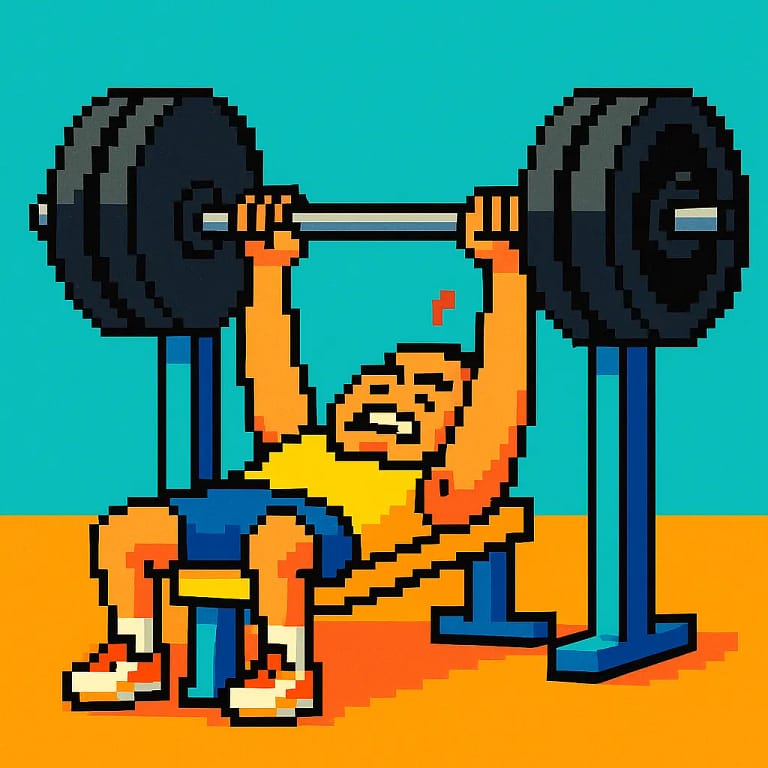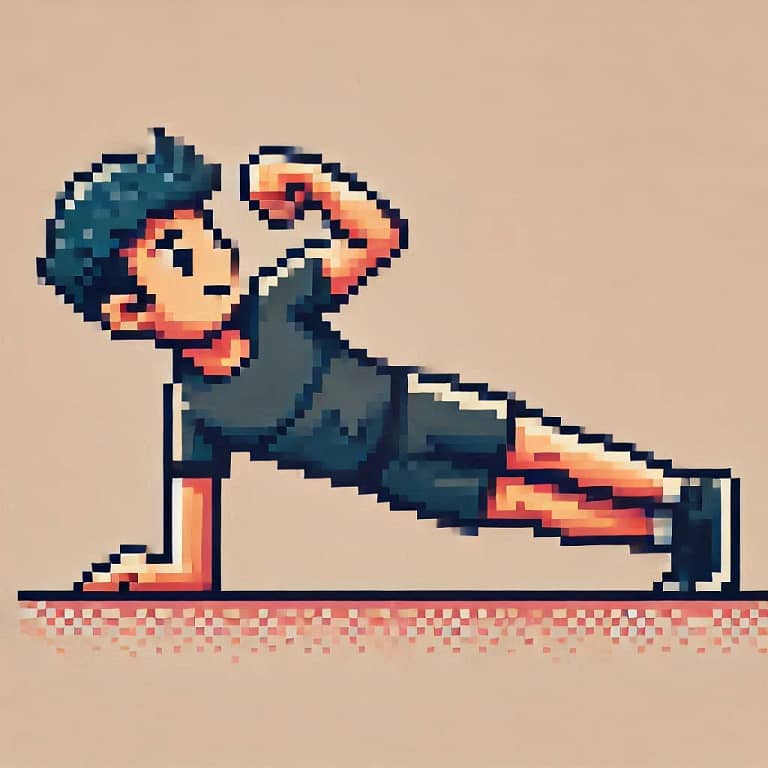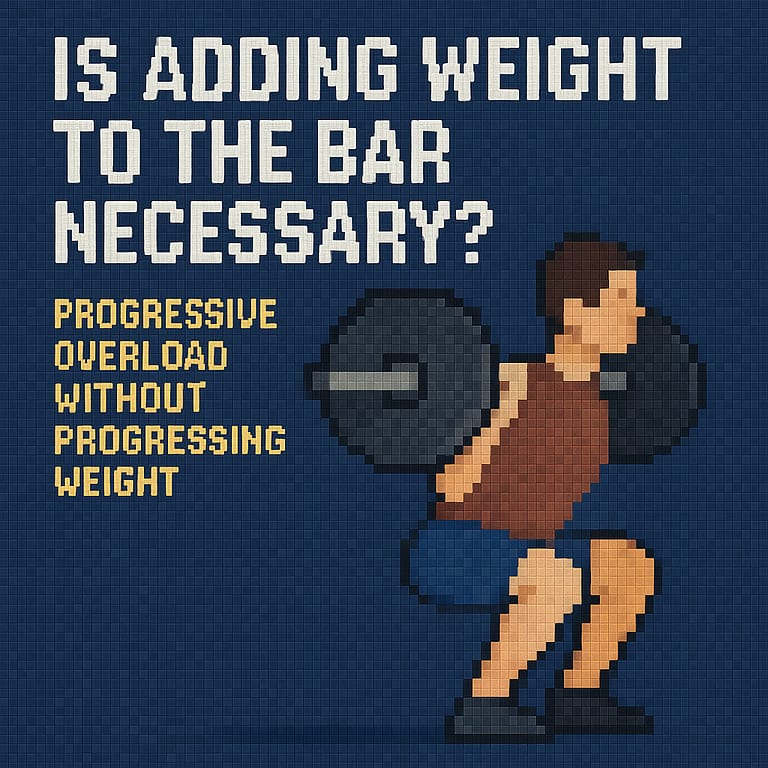Alternatives to Bench Press for Shoulder Health and Chest Growth
How to improve shoulder health, and build a great chest without the bench press
How much do ya bench? Everyone loves to bench press. It is a very effective exercise for building overall upper body strength due to the amount of weight you can use to overload your muscles.
But it has shortcomings too. It lacks range of motion and promotes poor shoulder blade function because of the fact that your shoulder blades are pinned down on the bench when pressing. This is a problem because your shoulder blades should be able to move freely when pressing.
I used to love to bench press. Every Monday was reserved for the bench press. I was fully focused on improving my bench press by any means necessary. I started to develop shoulder pain. This didn’t stop me. I simply popped a tylenol prior to training to push past the pain. Smart, right?
I eventually ended up with a shoulder injury. I was 26 at the time and just assumed that the pain I was dealing with was just a part of getting older. My shoulders were just wearing out, at 26!
When I was bench pressing my best numbers, my shoulders were always in pain. Not only was I developing shoulder pain, but I didn’t feel like the bench press was overly effective at growing my chest muscles and decided to look to other exercises to develop my chest and improve my shoulder strength and function.
The bench press is great for building the pecs, deltoids and triceps but falls short when it comes to improving upper back musculature and overall scapular function. It is important to train your upper back in conjunction with your pressing movements. Below I will show you how to work both.
Reasons for Bench Press
The bench press is considered the king of all upper body exercises because of its ability to pack size onto the upper body. This is probably because of the amount of load you can stack on the bar.
While I agree that the bench press is an effective exercise for building upper body size, it isn’t my favorite chest movement for a number of reasons. And believe me, I was obsessed with bench pressing heavier and heavier weight early on in my lifting career.
The bench press can be a dangerous movement on the shoulders and pec muscles. In fact, around 50 percent of all pec tendon ruptures involve the bench press.
Because the shoulder blades are locked down on the bench, the bench press can be dangerous to the shoulders as well. When we press, we should have free scapular movement.
The bench press is considered the king of all upper body exercises. It is a movement that allows you to lift a lot of weight, relatively safely and with minimal effort. I can’t think of anyone that doesn’t want to workout laying down.
But is it the best movement for overall upper body strength and hypertrophy of the pec muscles?
I have trained many clients and at a certain point started to notice how the bench press shaped their pec muscles. It greatly trained the lower pecs but not the upper.
Reasons Against Bench Press
The two main issues I have with the bench press are the lack of range of motion and the fact that your shoulder blades are pinned down on the bench.
You might be thinking that you can address the range of motion by incorporating the dumbbell bench press into your program and you would be correct!
Dumbbell bench presses allow for greater range of motion however it doesn’t address the issue of the shoulder blades being pinned on the bench.
When performing a pressing motion, it is important to have proper scapular motion. In other words, your shoulder blades should be able to retract together and protract (spread apart).
Once I found how to improve my upper back and scapular muscles all while performing pressing movements, my shoulders have gotten stronger and felt incredible and now when I bench press I have zero pain!
How to Build Pecs and Improve Scapular Function
Incline Pushup to Pushup to Deficit Pushup
One of the best alternatives to bench press in terms of building a great looking chest and maintaining healthy shoulders is the good old pushup.
Push ups are one of the greatest chest exercises because of their versatility and their ability to improve shoulder health. As mentioned above, the number one issue I have with the bench press is that your shoulder blades are stuck on the bench. This is a problem because your shoulder blades are meant to retract and protract during pressing movements.
But maybe you aren’t quite strong enough for sets of 10 – 20 good quality push ups.
No problem! Here is a great modification that can easily be progressed and regressed until you are performing not only pushups but deficit push ups. No pushups on knees please. Embarrassing.
Incline Pushup
The incline pushup allows you to improve your pressing strength while at the same time improves the function and overall health of your shoulders by promoting proper scapular or shoulder blade function. It’s very easy to set up and just requires two semi sturdy surfaces that are the same height.
Place yourself between a set of chairs or boxes. I like boxes because you can start higher up which makes the movement easier. The chairs or boxes should be a little wider than your shoulder width apart.
Place your hands on the sides of the boxes and stp your legs back until you are in a pushup position. Lower yourself to the bottom, feeling your shoulder blades retract and touch together at the bottom position. Hold this position for a split second before pushing back up to the start position. Make sure you press with a force going downward. Make sure you don’t push the chairs or boxes forwards causing them to tip over. Aim for anywhere between 1 and 10 perfect repetitions.
You can start with a high set of boxes so that the press is easier. As you continue to improve, you can lower the boxes so that the angle changes from that of a decline bench press to more of a flat bench press. When you start consistently getting 5 perfect repetitions, you are ready
to lower the boxes.
The reason we want to use two surfaces and not just a solid bench or couch, is so that we can develop strength in the most lengthened position for the muscles. That way, the incline pushup can be progressed to a deficit push up.
You can either lower the height of your sturdy surfaces or you can place things like weight plates or step aerobics risers under your feet until your body is more parallel to the floor. and you will be pressing from a normal pushup angle.
Even if you are strong enough to go straight to deficit push ups, incline pushups can still be useful for priming the movement and greasing the groove
3-5 sets of 1-10 repetitions
High Rep Push Ups
Because you have been practicing pushing out of a deficit, when you decide to return to regular pushups, you will be shocked at how easy they are! Now you can string together sets of 10 – 20.
Pushups can be performed anywhere with no equipment. Which makes them a great exercise to get a lot of volume or total work. New research is finding that the number one aspect of muscle building is overall volume of work at moderate resistances. So if you can get 10 – 20 sets of pushups per week, you will see a massive improvement in shoulder health and overall chest musculature!
3-5 sets of 10 – 20 repetitions
Parallel Dip
The parallel dip is hands down my favorite movement for the chest. This is because of the way it develops the chest to give you a pec lift, so to speak. The parallel dip trains the upper pec just as well as the lower pec and as long as you program your sets and reps properly, parallel dips allow for quicker recovery and that means possibility for more volume. And more volume means more muscle as research is showing.
Parallel dips can be dangerous too if you add too much weight. Pec tendon ruptures are possible, but I don’t think it is necessary to add a lot of weight especially if you are unable to take the movement through the full range of motion.
Once you’ve improved your incline pushups you will be ready to tackle a proper parallel dip.
When done correctly, which means emphasizing the negative and descending to a deep stretch of the chest, the parallel dip not only develops a great set of chest muscles but improves range of motion as well.
This exercise can be harder to progress if you can’t perform a bodyweight dip yet, but what you can do is place an assistance band around the handles and put your knees on the band to help assist you through the movement.
If you have followed the progressions from incline pushup to deficit pushup to high rep pushup, you should be ready for parallel dips, but if you aren’t quite comfortable with them yet, try assisting yourself with resistance bands or a box behind you.
Using bands to assist you is a great way to lower the “entry level” for this exercise. Bands work really well with this exercise as well since as you are lowering yourself into the movement to the point where the movement is the hardest, the band is stretching out providing you with more help when you need it the most and less help when you need it less.
Bands are not overly expensive and can be used for many different exercises and can be purchased for cheap online.
If you don’t have bands at your disposal, a simple chair or box behind you to hold your legs up will work too. Slow progression is key.
When you are ready for a challenge you can add resistance through a belt or a vest. But don’t let the added weight stop you from getting proper range of motion.
3-5 sets of 5-10 repetitions
Conclusion
When it comes to improving scapular function, shoulder health and overall chest musculature, these exercises are gold. They are a weekly staple for me because they allow me to keep my volume of work high (which is a major contributing factor for pressing development and muscle growth) but at the same time I can recover from these exercises allowing me to stay consistent with them.
In the training protocol below, mix and match the exercises for a total of 10 sets per workout, two to three times per week. If you decide to do three sessions per week, lower the number of sets performed to 5 per workout for a total of 15.
Training Protocol
| Training Protocol 10-20 total sets per week | ||||
| Focus | Exercise | Sets | Reps | |
| Scapular Function/Chest Hypertrophy | Incline Push up | 3-5 | 1-10 | |
| Deficit Push up | 3-5 | 5-10 | ||
| High Rep Push up | 3-5 | 10-20 | ||
| Parallel Dip | 3-5 | 5-10 | ||
When starting out, don’t let your sets exceed 20 per week unless you find you can still recover from the amount of work performed. There may require a little trial and error here.
Key Takeaways
References
- Alizadeh S, Rayner M, Mahmoud MMI, Behm DG. Push-Ups vs. Bench Press Differences in Repetitions and Muscle Activation between Sexes. J Sports Sci Med. 2020 May 1;19(2):289-297.
- Carek PJ, Hawkins A. Rupture of pectoralis major during parallel bar dips: case report and review. Med Sci Sports Exerc. 1998 Mar;30
- ‘Golshani K, Cinque ME, O’Halloran P, Softness K, Keeling L, Macdonell JR. Upper extremity weightlifting injuries: Diagnosis and management. J Orthop. 2017 Nov 7;15(1):24-27.
- Melani A, Gobbi G, Galli D, Carubbi C, Masselli E, Neri LM, Giovinco G, Cicchella A, Galuppo L, Presta V, Vaccarezza M, Vitale M, Mirandola P. Muscle Activation in Traditional and Experimental Barbell Bench Press Exercise: A Potential New Tool for Fitness Maintenance. Sports (Basel). 2019 Oct 17;7(10):224.
- Rodríguez-Ridao D, Antequera-Vique JA, Martín-Fuentes I, Muyor JM. Effect of Five Bench Inclinations on the Electromyographic Activity of the Pectoralis Major, Anterior Deltoid, and Triceps Brachii during the Bench Press Exercise. Int J Environ Res Public Health. 2020 Oct 8;17(19):7339.
- Saeterbakken AH, Mo DA, Scott S, Andersen V. The Effects of Bench Press Variations in Competitive Athletes on Muscle Activity and Performance. J Hum Kinet. 2017 Jun 22;57:61-71.ds






